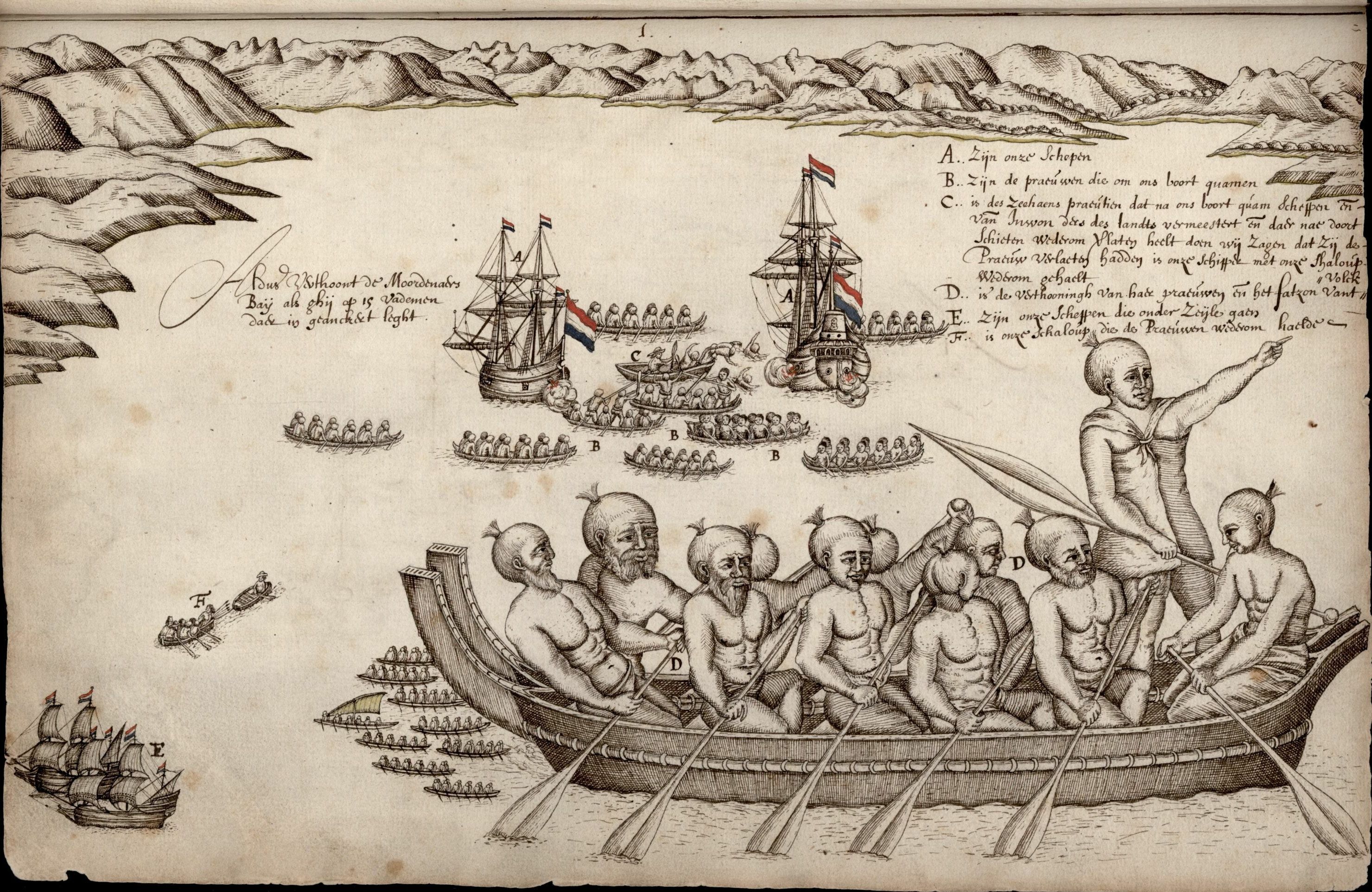Faces of Australia: Abel Tasman
There was a number of early explorers to the shores of Australia. Most landed on the west coast of Australia after being blown off course by storms when crossing the Indian Ocean to get the Spice Islands of Indonesia. However, the first explorer to actually be sent on a voyage of discovery to Australia was the Dutch sea captain Abel Tasman.
Tasman worked for the powerful Dutch East India Company, which in the 1600’s was quite possibly the world’s richest company due to the incredible profits the company made from its spice trade in the Indonesian archipelago. The company was also making profits from shipping other products from around the world such as wood, silk, coffee, porcelain, gold, and copper. The search for more profits is what led the Governor-General of Batavia (modern day Jakarta), Anthony Van Diemen to fund an expedition in 1642 to map the unknown land south of Indonesia that his cartographers had spotty reports on. The man he chose for the expedition was Abel Tasman.

Abel Tasman’s Heemskerck
Van Diemen gave Tasman two ships to aid him in his search to
map the unknown southern continent. The two ships were named the Heemskerck and Zeehaen. Tasman’s two ships sailed first west and then south towards Mauritius. From there he then sailed back towards the east hoping to hit Western Australia which was then called New Holland, but he missed the entire west coast of Australia. The winds Tasman was able to catch winds continued to bring his ships to the east and straight to the island of Tasmania. However, when Tasman landed on Tasmania he had no idea he was even on an island. This island rich in natural resources Tasman named Van Diemen’s Land after the Governor-General of Batavia who sent him on this voyage. Abel Tasman thought so highly of this land he discovered he wrote this:
“Whoever perfectly discovers and settles it will become infallibly possessed of Territories as rich, as fruitful, & as capable of improvement, as any that have been hitherto found out, either in the East Indies or the West.”

1663 map of Van Diemen’s Land, showing the parts discovered by Tasman, including Storm Bay, Maria Island and Schouten Island.
Strangely despite Tasman holding a high opinion of the land he had found, he did not further explore it. A reason for this could be because Tasman was sent on a voyage of discovery in order to increase profits for the Dutch East India Company. However, no matter how much they searched for indigenous people to trade with they could not find anybody. Tasman’s crew would catch glimpses of the Aborigines, but the Aborigines would always run off and avoid contact. You have to figure that the Aborigines had probably never seen white people before or such large ships. Seeing these early European explorers must have been like if a space ship landed in your back yard and you saw aliens deboarding. Your first instinct probably wouldn’t be to run outside and say G’day to them.
So instead of further exploring the coastline of Van Diemen’s Land, Tasman set sail once again use the prevailing winds to take his
ships further east.
Route of Abel Tasman’s Voyages between 1642-1644.
After a long sail Tasman was blown on to the shore of an even richer land then one he just discovered that he would name New Zealand. When he landed in New Zealand Tasman actually thought he was on one of the islands on the southern tip of South America. As Tasman sailed north from the South Island he landed on he passed the strait that run between New Zealand’s two islands and actually thought it was a bight. Along the coast of the North Island one of Tasman’s boats was attacked by local Maori warriors. Four of Tasman’s men were killed thus causing Tasman to call the bay, Murderer’s Bay.

Murderer’s Bay, 1642
On the way back to Batavia, Tasman sailed through both the Tongan and Fijian Islands. When Tasman returned to Batavia his voyage of discovery was technically considered a failure since he found no one to trade with and thus made no profits. However, his discovery of these new lands though was good enough for Van Diemen to not entirely right off Abel Tasman; either that or Van Diemen was flattered that Tasman named a new land after him.
On his second voyage in 1644 Tasman was tasked to determine whether the Australian continent, Van Diemen’s Land, New Guinea, and
New Zealand were all linked as one continent. To determine this Tasman first sailed east from Batavia and then headed south from New Guinea. From here Tasman set sail for the northern coast of Australia.
Incredibly during this voyage Tasman failed to discover Torres Strait which would have proven that Australia is not in fact connect to New Guinea. He began sailing back towards the west and ultimately explored much of Australia’s northern coast. Tasman actually mad it all the way to Shark Bay before setting sail back to Batavia.
Once again like his first voyage, Tasman’s journey was considered a failure because he did not find any wealthy lands with people to trade with despite the vast amount of land he charted. Tasman would no longer be sent on any voyages of discovery and instead worked for the Governor-General in Batavia by leading trade missions to places such as Sumatra, Thailand, and the Philippines.
Tasman never returned to Holland and died in Batavia in 1659. Incredibly despite how important geographically his discoveries were, no one capitalized on them until a hundred years after Tasman’s death when a British captain by the name of James Cook set sail to explore the lands that Tasman found and the rest as they say is history.




